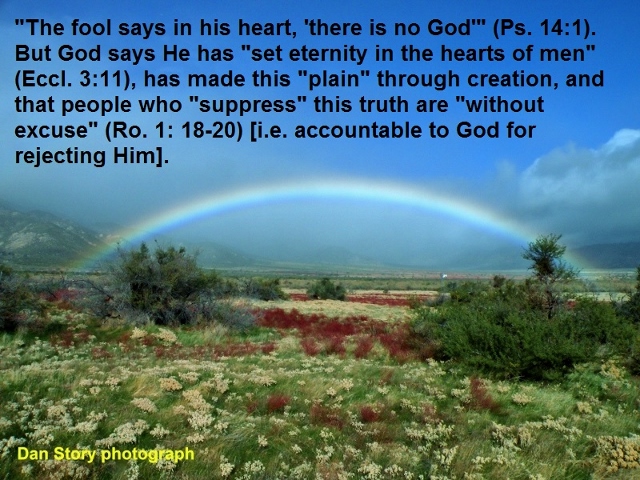 Part Six: Why Do Some People Fail to See Evidence Of God in Nature; and is the Book of Nature and Science Compatible?
Part Six: Why Do Some People Fail to See Evidence Of God in Nature; and is the Book of Nature and Science Compatible?
One of the great blessings God has granted the family of man, as his most beloved creation, is his self-disclosure in nature—and making it accessible to every human being who ever lived. He did this for a reason. People who respond to God in nature and truly seek to find him can find him. The first century Christian apostle and missionary, Paul of Tarsus, speaking to a group of Greek philosophers in ancient Athens, explained it this way:
The God who made the world and everything in it is the Lord of heaven and earth and does not live in temples built by human hands. And he is not served by human hands, as if he needed anything, because he himself gives all [people] life and breath and everything else. . . . God did this so that [people] would seek him and perhaps reach out for him and find him, though he is not far from each one of us (Acts 17:24-27, emphasis added).
Notice this promise has limited application—it is for those who “seek him.” God has provided enough evidence in nature to confirm his existence and insight into his nature and character—but he will not coerce people to seek him who choose not to. And here’s the rub. All people have the opportunity to encounter God through creation, “because God has made it plain to them” (Romans 1:19). People who reject this general revelation actually “suppress” truth about God revealed through creation (v.18). So encountering God in nature is a matter of the will. Those who seriously seek God through what he “made” will find him, said Paul. Those who don’t won’t.
General Revelation
When referring to God’s self-disclosure and activities in nature, most theologians today use the term general revelation rather than Book of Nature. It’s called “general” because it is limited in information about God. For example, it does not reveal God’s redemptive plan for the human race nor the depth of the immeasurable love he offers all of us. But it does reveal that God exists and is the creator of life and the cosmos, and that he is eternal, all-powerful, and sovereign over all life on Earth.
For this reason the visible world of nature can be a window into unseen, spiritual realities inaccessible to science and impossible to fully comprehend independent of divine assistance (the Holy Spirit). In other words, God has created two realities: the invisible, spiritual realm undetected by our five senses, and the physical, visible realm accessible to our senses and science. Nature can be a bridge between the two. On the one hand, it is thoroughly physical; yet, because the natural world is the product of God’s creation, it is filled with pictures and symbols of divine realities. Thus, for sincere and earnest spiritual seekers, nature provides remarkable illustrations of divine truths and insight into God’s wisdom, knowledge, creativity, grandeur, and more. We’ll look at many of these in later blogs.
But first, this raises questions that will be answered in the next two blog articles: Is the God revealed generally in nature and the God revealed explicitly in the Bible one and the same? In particular, how does nature reveal God? (C)
NOTE: Since this series of blog articles are adapted from a new book in progress, I’d appreciate any sincere comments or suggestions you may have.